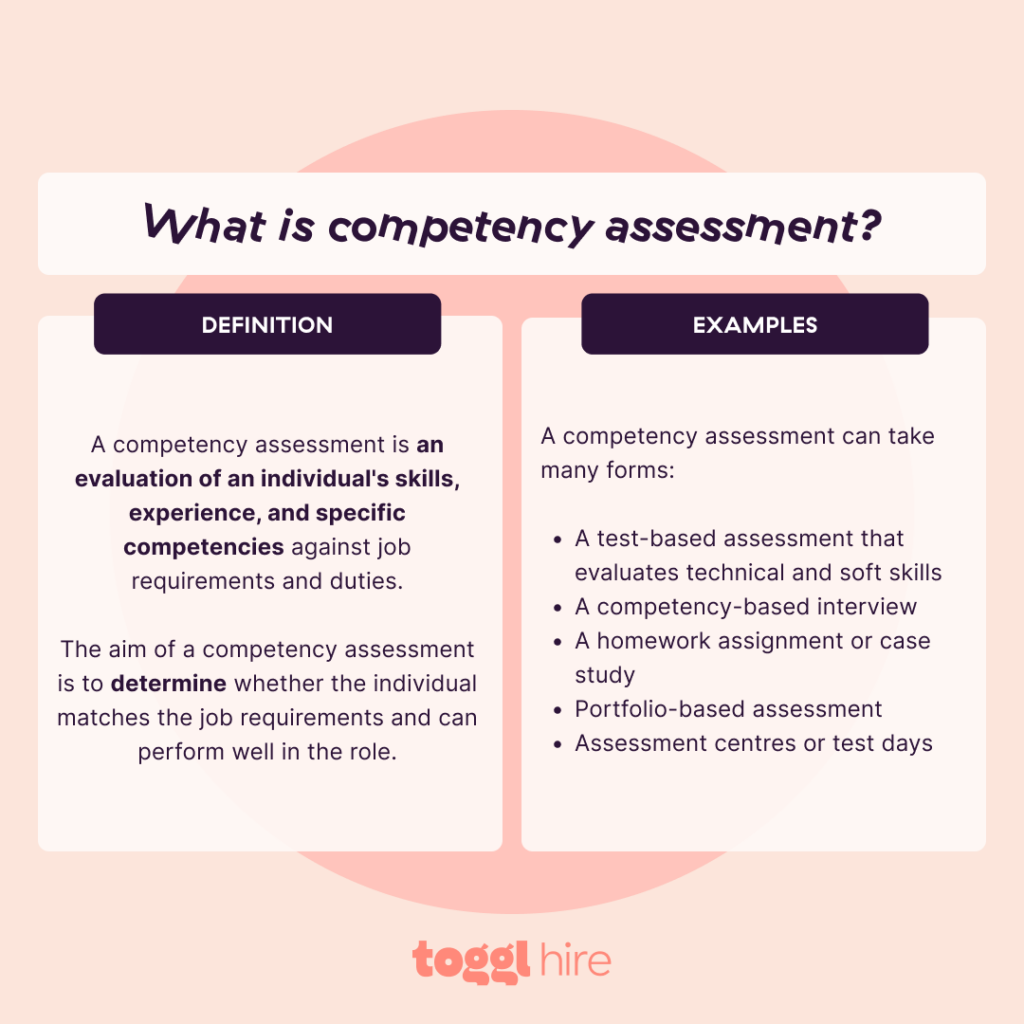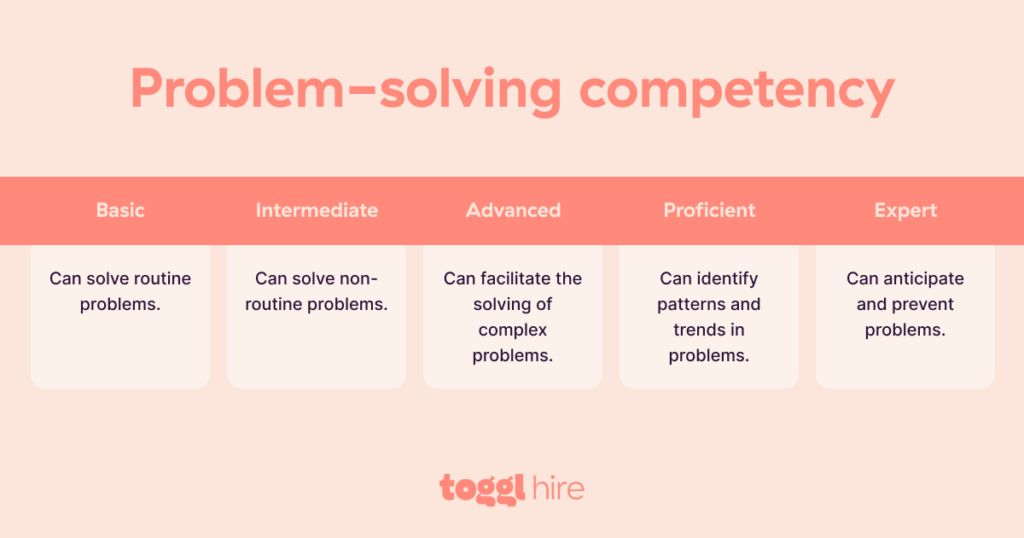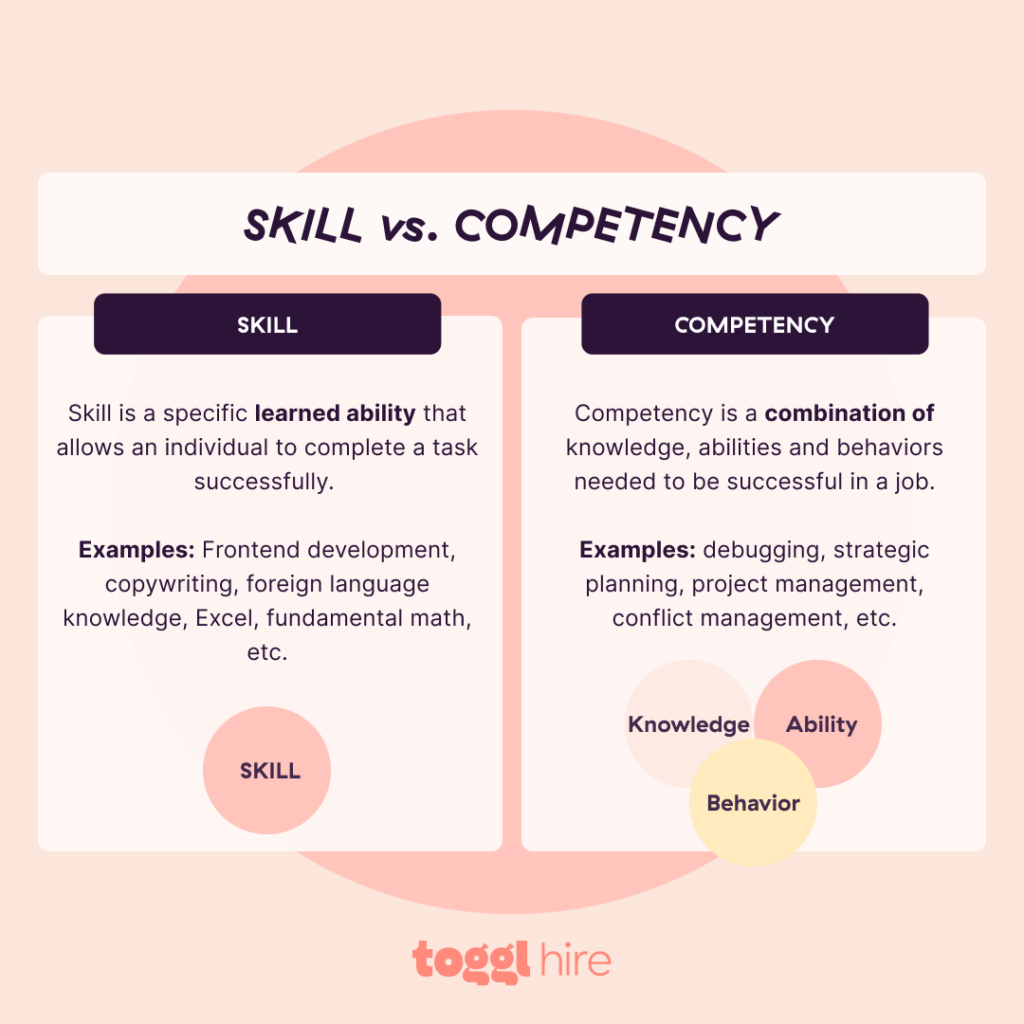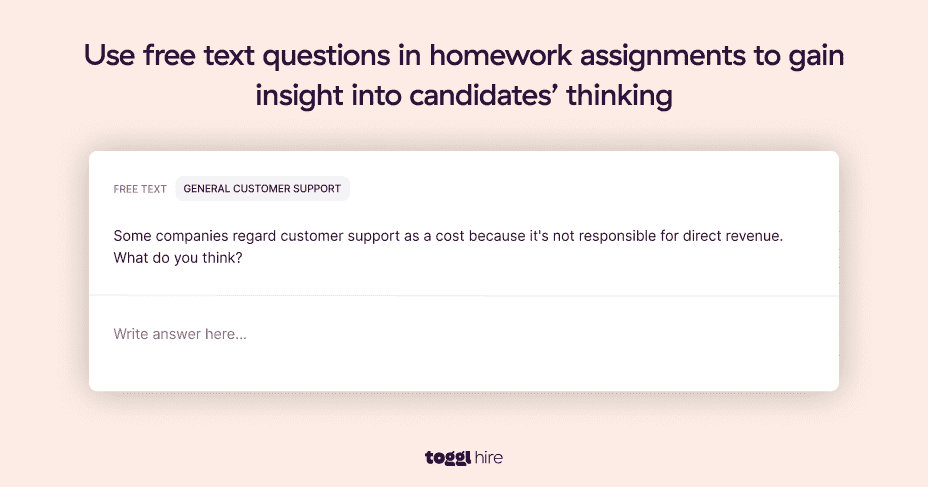Are your HR leaders increasingly worrying about organizational capability? We get it. Companies need to make the most of their employees’ talent and skills, especially as certain hiring budgets dwindle and resources become more precious.
Since every new hire has the potential to either close or widen the organizational skill gaps, one thing hiring managers can do is turn to the humble competency assessment to find talent for current and future jobs.
Competency-based assessments focus candidate selection on specific skills and abilities that actually matter on the job. A well-structured competency assessment can check for core technical skills and look at essential soft skills like teamwork or collaboration, helping your hiring team quickly identify ideal candidates.
Think it’s time to use competency assessments in your talent acquisition strategy? Here’s how.
TL;DR — Key Takeaways
- Competency assessments test for multiple skills and personal attributes. They’re based on the requirements of specific roles. A role-based competency model makes it easy to match the right candidates to the right positions.
- Competence testing is part of a company’s talent assessment strategy. Organizations need strategic workforce planning to avoid skill gaps. With the economy changing rapidly, anyone who lags behind will feel the effects quickly.
- There are different ways to test competencies. Options include skills testing, task-based mentoring, homework, competency-based interviews, feedback from peers, and even self-assessment. Companies usually employ a blend of methods to suit their recruitment process.
- It’s no easy feat designing a role-specific competency assessment. Luckily, we’ve already done that for you! Browse over 180+ role-based assessments in our test library. Combine them with our pre-built video tests and homework assignments to learn everything you need to know about an individual’s skills.
Ready to confidently assess competency skills?
Use our skills assessments to gain data-driven insights that help you hire smarter.
See How It Works
What is a competency assessment?
A competency assessment is an evaluation of an individual’s skills, experience, and specific competencies against job requirements and duties.
Assessments could include skills tests, interviews, homework assignments, and task-based testing. Regardless of the one you choose to use, the overall aim is to generate enough information to determine whether the individual matches the job requirements and can perform well in the role.

Competency assessments play a key role in various parts of the recruitment process:
- During the initial stages of the recruitment process, competency assessments filter the best-fit candidates from the thousands of applicants, helping you identify candidates who match the required skills and have the right personality traits to succeed.
- Internal competency assessments detect the existence of a skills gap. When competency assessments happen continuously, they help companies detect missing skills. If you use them correctly, you can use them to recruit new talent or plan training for existing workers.
- On an individual level, pre-employment testing helps identify an individual’s abilities and weaknesses. It reveals areas for personal development and helps an individual reskill to keep pace with technology or business practices.
Competency assessments aren’t simple skills tests or personality surveys. They’re tools that empower HR leaders and make it possible to build high-performing teams. They provide information about skill levels within an organization and help onboard qualified talent. When used correctly, they provide a consistent method to achieve skill gap closure whenever that’s required, too.

Skills vs. competencies
A skill is the ability to carry out a function or task by putting learning into practice. This could be a technical skill, such as Python coding or writing Machine Learning algorithms, or it could be a soft skill, like giving presentations to external organizations. Skills tend to be transferrable and not connected to roles within an organization.
Competencies describe the ideal attributes of someone occupying a specific role and may include skills, knowledge, experience, or even personality traits. For example, problem-solving is a skill, while problem-solving while working as a civil engineer is a competency.

When used in the hiring process, a competency-based assessment can help put the right talent in the right roles. HR managers often turn to competency tests when conducting organization-wide talent gap analysis and workforce planning. Identifying skill gaps in time allows leaders to organize staff training programs to meet business future needs.
Businesses often use competency assessments outside of the hiring process to determine who to hire or promote. But as we will see, understanding competencies also requires the ability to assess and develop critical skills. So, in practice, skills and competencies are closely related.
The 3 main types of competencies
Core Competencies
Core competencies are behaviors or skills that every employee should have. They form the basis for a robust competency framework.
Example: At the Organization for Economic Cooperation and Development (OECD), core competencies include teamwork, flexible thinking, developing talent, client focus, and strategic networking.
Functional competencies
Functional competencies are skills linked to specific job requirements. Functional competencies vary with seniority and the complexity of a given role. Each job usually has 3-5 essential functional competencies.
Example: Functional competencies for a university IT manager could include network management, cybersecurity, managing cloud infrastructure, and applying educational IT.
Behavioral competencies
Behavioral competencies are soft skills that are connected to roles. Roles may require specific personality traits or cultural skills.
Example: Behavioral competencies for a corporate recruiter could include negotiation, communication skills, building relationships, and results-oriented working practices.
Competence vs. competency: What’s the difference?
Competence and competency are often used interchangeably, but they’re actually different concepts.
When we talk about competence, we usually mean general ability and intelligence. Competency is more precise. It relates to the ability to meet the core requirements of an individual’s role.
Imagine you are looking for a social media manager. We can agree that an “incompetent” person probably won’t be suited to the role. But even an intelligent person who lacks great communication skills may struggle to perform to the required level because they lack the right competencies.
In that sense, competency is like applied competence. In the social media example, you may need a “highly competent individual with the ability to communicate, a deep knowledge of social media, and a talent for marketing.”
Our imaginary employee would need to be competent in using Facebook, running marketing campaigns, and writing engaging content. Without those skills, they would not meet the competency criteria for their job.
What is a competency framework?
Competency frameworks set out the necessary skills for every role in an organization. They allow companies to plan competency testing strategies systematically. With the right framework in place, you should know exactly what skills every role requires—from junior assistants to executive managers.
Any organization with a mixture of technical, administrative, and managerial roles needs a competency framework.
Common elements of a competency model include:
- Soft skills that all workers should have
- Desirable soft skills for individual roles
- Technical skills for individual roles
- Strategic or management skills related to meeting corporate goals
A solid framework informs employees about how to develop their skills, clarifies career progression, and uses skill gap analysis to ensure that current and future jobs meet organizational goals.
The OECD is a good example of how to use frameworks. The international research body groups its role-based competency model into three families (executive leadership, research, and administration). These families contain numerous sub-groups containing competencies for every role.

The model above uses a competency model to specify unique technical competencies for different jobs. But it also links to core competencies that every employee needs. It’s a clever mix of general organizational goals and individual requirements. And most organizations can learn from its structure.
Advantages and challenges of competency assessments in hiring
Advantages
- Equality: A competency test should be completely neutral (or as neutral as possible). Tests are the same for everyone and generate consistent information about whether staff members meet strategic objectives. This skills assessment data feeds into benchmarked decisions to build the perfect organizational skill set.
- Efficiency: Consistent benchmarking allows you to assess candidates or employees at scale. Customized competency tests take the stress out of workforce assessment. You can quickly determine reskilling requirements. You can also reduce the time to hire new employees.
- Relevancy: Competency assessments are focused on the tasks that workers actually carry out. Following a competency test, employees know what they need to learn to improve their productivity. Candidates get valuable insight into what their role could be like in the future.
- Strategy: Companies can combine a competency assessment system with its strategic skills framework. An organization without a plan to integrate new skills will quickly fall behind. Competency tests let you combine traditional job task analysis with deeper learning. You can discover candidates who really suit your organizational needs.
Challenges
- Lack of flexibility: Sometimes, competency testing can be too specific. This can result in boring tests with little scope for candidates to express themselves. And testing can even hide skill gaps. For instance, candidates could pass an ultra-specific competency test by accidentally guessing correctly.
- Internal alignment: Competency assessments must align with a shared understanding of business objectives. Testing competencies that are out of date or irrelevant is useless. Competency assessment data must serve actual business needs, not abstract ideas of a “good” candidate. That’s why job task analysis is essential before starting competence testing.
8 most popular competency assessment methods
Now, we know what competency assessments are and why they matter. But what techniques can you use in your competency assessment system? Here are eight of the most popular ways to use competency analysis as a business tool.
1. Test-based assessment
A job-specific skills assessment is one of the most effective screening methods. It lets you evaluate candidates by skill levels and instantly spot high-performers. You can often combine hard skills with soft skills into one competency assessment, filtering out candidates with just the right mix of skills, experience, and competence for the position. This way, you can spend your valuable time interviewing highly qualified people instead of wasting time with poor-fit applicants!

One of our customers, Proxify, used competency testing early in the hiring process to pinpoint A-level development talent and fast-track them to the next step. Using our library of 20,000+ expert-created questions, Proxify crafted a highly-tailored competency assessment to automate initial screening and shortened their time-to-hire to just 12.5 days.
You can do the same. Our skills tests draw on expert knowledge and cover everything from technical to marketing to finance roles. Clients can build a customized competency test for every role. And they can streamline recruitment while finding higher-quality candidates.

2. Observation-based assessment
Careful observation over time is one of the best ways to understand whether people are suited to a specific role.
Internships are a great example of how observation works as a competency test. Companies can use skills testing to identify interns with the right core competencies. Interns then have the chance to prove they have what it takes to succeed in real-world environments.
Task-based mentoring, also known as collaborative learning, is a fast, reliable way to determine whether a young professional has the potential to grow into their role. Simply pair high performers with your interns and observe how fast they learn on the job! This should also increase the likelihood of an intern progressing to full employment – saving the company time and money.
3. Interview-based assessment
Sometimes, managers can only learn about competencies in a face-to-face environment. Some people “test” well but don’t deliver in person. Avoid this scenario by matching skills tests with competency-based interviews.
As much as they might sound like it, competency-based interviews aren’t social calls. They compare answers from interviewees with competency criteria and generate valuable insights about a candidate’s soft skills. And there are some elements that they need to include:
- Ideal candidate profiles: Interviewers must know the profile of an ideal candidate. This should be linked to core competencies for the specific role.
- Targeted questions: Carefully planned questions test for skills like problem-solving, analytical thinking, and adaptability. Questions should provide information about how well the candidate meets the desired skills profile for the role.
- Candidate evaluation forms: These forms compare the candidate’s interview performance against competency criteria. They have a standard layout, allowing you to compare many candidates objectively.
- Candidate scorecards: Scorecards work alongside evaluation forms. Interviewers use them to rate how well interviewees meet core requirements.
Remember that interviews must be systematic and fair. Systematically build profiles and scorecards that assess competencies. And use standard templates to ensure that all candidates are treated equally.
4. Homework or project-based assessment
Homework assignments tend to be used after initial screening or skills testing but before an additional round of interviews. Recruiters isolate a pool of potential hires and assign take-home tasks to assess their real-world skills in context.
Candidates have a set amount of time to complete each task. Tasks usually involve more complex questions than standard skills tests, providing recruiters with more information about the candidate’s skill set.
Home assignments are also very diverse. Tasks could involve coding challenges, written tests, presentation planning, or making an improvised sales pitch. However, they must always assess the core competencies of the specific role, so careful task selection is vital.
We rely on home assessments to find elite-tier talent, so we know how effective they can be. And it’s easy to try homework in your own processes. Our library features 500+ pre-built task-based assessments that are ready to use and cover a wide range of roles.

5. Portfolio-based assessment
Portfolio-based competency assessment draws on work previously completed by candidates. Examples include graphic designers, creative directors, video producers, artists, musicians, app developers, and marketers. Portfolios tend to work best in positions where individuals need to show off their creativity.
If you use portfolios as a competency test, be clear about what candidates need to provide. Request examples of their work that relate to the role they’re applying for—not just their best work. The portfolio should show that the individual is well-suited to the role and ideally has relevant experience.
Also, don’t rely on portfolios alone. Combine examples of work with relevant skills testing and homework assignments. That way, you will screen out deceptive candidates and double-check for core competencies.
6. Assessment centers or test days
Assessment centers and test days handle large numbers of candidates at one time, making them a great option for assessing graduate recruits.
Companies can administer a standardized competency test for aptitude and core skills and then easily filter out poor-quality candidates. This is almost always better than choosing from a very similar stack of paper resumes.
However, assessment centers work less well when assessing competency for specialist roles. Roles can be unique, with a relatively small pool of potential candidates. Organizations need to follow high-volume testing with more focused competency testing.
7. Self-assessment
If you want to get a full picture of an individual’s competencies, it sometimes helps to ask the person who knows them best: themselves.
Recruiters can request self-assessments of a candidate’s achievements, skills, and abilities as part of the initial application phase. Focus these self-assessments around core competencies. That way, you force candidates to think about how well they are adapted to the role. And they have a chance to convince you about their passion and talent.
Self-assessment isn’t a solution on its own. You need to combine it with skills testing, interviews, and other competency assessments. However, asking candidates about themselves can be extremely informative.
8. 360-degree feedback assessment
In a 360-degree feedback exercise, HR teams ask colleagues, managers, or even customers to assess how well an individual performs in their role. Feedback should be as broad as possible (hence the 360-degree reference).
Naturally, this assessment method is better suited for employee performance management or talent gap analysis than candidate screening. Participants fill out forms listing a series of core competencies. They rate how well the subject meets these competencies, and there may be written sections to provide more detailed feedback.
Submissions remain confidential, but the subject can see the results. This helps them plan their own development. Assessments also inform managers as they inform organizational plans, arrange training, or assess employee roles.
On the negative side, 360-degree feedback tests for opinions, not concrete facts. This makes it prone to bias. It’s hard to ensure that feedback is totally neutral. And constantly asking colleagues to report on their peers is not always beneficial for employee morale.
7 top benefits of using competency-based assessments
#1. Find the most qualified candidate
Competency assessments ensure that your talent acquisition strategies help you select candidates with essential skills, knowledge, and capabilities.
Competency tests help you quickly focus on candidates who are skilled and suitable for specific roles. You can reduce the number of interviews required and learn far more than resumes could ever provide.
#2. Identify company-wide skills gaps
Competency tests identify skills effectively at a time when global skills gaps are challenging recruiters like never before.
The global skills gap is real. According to the World Economic Forum (WEF), 50% of jobs worldwide will require reskilling by 2025. 70% of the skills predicted to be essential in 2025 did not appear in lists for 2015 or 2020. In that context, precise competency testing is going to be crucial.
Competency assessment helps you identify the best candidates, reducing the need for costly rehiring processes. It also lets you plug the skill gap by reskilling existing employees—a win-win situation.
#3. Predict future job performance
Competency assessments provide an accurate snapshot of how candidates will contribute to your business over the long run. Getting proof of competency early in the recruitment process enables the hiring team to pinpoint candidates who will succeed in the role, as competency is one of the most reliable predictors of future job performance.

Study after study has demonstrated that general cognitive ability combined with job-specific knowledge and skills play a significant role in predicting future performance on the job. You can make confident hiring decisions to fill current skills gaps and raise the bar of your team’s future performance by paying closer attention to your quality of hire.
#4. Understand employee career progression
Competency assessment detects gaps in an individual’s skills and can help them plan their career development. Managers can work with employees to understand their skill gaps, creating lifelong professional development plans to help their ongoing growth.
This approach forms part of a wider talent management strategy, using skills gap analysis to support a culture of continuous learning.
#5. Deliver rapid onboarding
Competency assessment makes it easy to assess the skills of new employees during the onboarding process.
Managers can then create individualized onboarding plans for each new hire. Plans can include training and mentoring, but employees can start in areas where they are already strong.
#6. Improve employee retention
Competency assessment helps companies retain employees and minimize employee turnover. According to the US Department of Labor, 44% of workers are looking to change roles, with many citing poor growth opportunities as a reason for compromising their career objectives.
Employees value employers who offer training programs to develop their skills and progress their careers. Competency testing lets them know where they stand and shows what individuals must do to improve their skills and move up the organizational hierarchy.
#7. Save money on the recruitment process
Competency testing reduces the cost of hiring by speeding up recruitment. Recruiters can spot the best candidates quickly, and fewer interviews are required. Skills-based hiring also reduces the risk of making a bad hire, requiring costly retraining or even a fresh recruitment process.
As an added bonus, competency testing finds candidates who are well-suited to their roles. They tend to work more productively and are less likely to leave due to low job satisfaction. So, over time, your recruitment needs will decrease.
4 ways to measure the effectiveness of a competency assessment
Competency assessment is a moving target. The skills that companies need constantly change. And assessments that worked last year may not be exactly right for today’s workforce. That’s why it’s vital to know how effective your competency assessments really are.
Monitoring Key Performance Indicators (KPIs) is the best way to ensure your talent acquisition strategy is on the right track. With the right capability analytics, you can ensure that tests and other assessment methods actually measure the specific skills and competencies that matter.
When deciding on competency assessment metrics to track, consider:
- Employee Performance: How well do employees perform before and after competency-based training exercises? Does including competency tests in your hiring process help you onboard high-performers?
- Employee Satisfaction and Retention: Have job satisfaction and retention rates changed after introducing competency testing? Or has competency testing actually led to lower employee morale?
- Promotions: Are competency assessment measures leading to promotions and career development? Do you see a solid correlation between employees acing their competency assessment and getting promoted?
- Recruitment costs: How much money are you saving by using competency testing?
Hire the right candidates with Toggl Hire skills tests
Knowing how to assess candidates is crucial at a time when finding the best talent is becoming harder (and when everybody has access to the internet and AI to help them fluff out their resumes and portfolios). Competency assessments connect the right candidates with the right roles.
Our competency tests take the stress and risk out of hiring. Whether you’re looking to improve your recruitment process or close skills gaps with existing employees, introducing a competency assessment could be exactly what you need to drive sustainable organizational growth.
Create a free Toggl Hire account and start exploring our library of pre-built competency assessments today!
Juste loves investigating through writing. A copywriter by trade, she spent the last ten years in startups, telling stories and building marketing teams. She works at Toggl Hire and writes about how businesses can recruit really great people.














